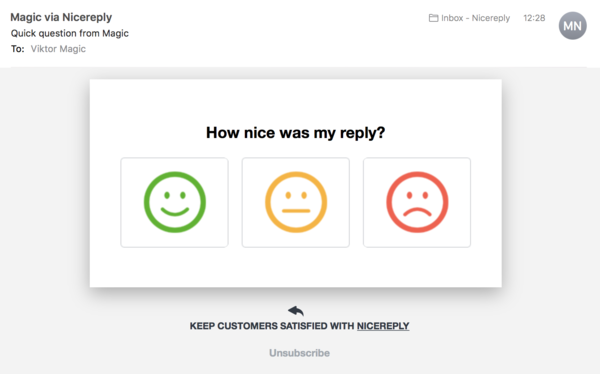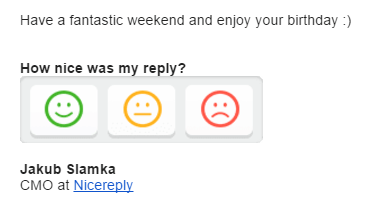Conversational marketing is mostly about listening to your customers when they’re in need—and using what you learn about them throughout your engagements.
As a consumer, imagine that the next time you entered your favorite store, you were greeted by a one-on-one shopping assistant promising to cater to your every need.
Throughout your experience—and beyond—your personal shopping assistant would:
- Listen to your product- and experience-related needs and desires
- Give you information and advice based on these needs
- Guide you through the buyer’s journey, making every step along the way simple and easy
(Oh, and they also go away when you don’t want them to be there—but will come back whenever you do.)
While such magical creatures don’t actually exist, the next best thing, for the consumer, is for brands to create a customer experience centered around the ongoing dialogue between parties.
Which is where conversational marketing comes in.
What is Conversational Marketing?
Conversational marketing refers to any marketing effort that revolves in some way around one-to-one communication with individual customers.
There are two important things to note:
- Communication is a two-way street
- Communication is done to allow the relationship between parties to grow
With that in mind, it should be clear that conversational marketing is mostly about listening to your customers when they’re in need—and using what you learn about them throughout your engagements to further provide for their needs and improve their experience with your brand.
How Conversational Marketing Improves the Customer Experience
There are a ton of possible ways to go about making improvements to your CX.
So, why is conversational marketing so effective at doing so?
Provide a More Personalized Experience
Conversational marketing enables your team to provide more personalized—and sometimes even more individualized—service to your customers.
This is exactly what the modern consumer wants:
- 84% of customers say brands that treat them like humans (rather than faceless customers) win their business more often
- 78% of customers only engage with offers that are tailored to their needs, based on their history with a brand
- 77% of consumers choose, recommend, and pay more for brands that provide a more personalized service
The more often you converse with your customers on an individual level, the more you’ll be able to learn about them—as well as how their experience with your brand has been. In turn, you’ll have a much better idea of who they are, what they need, and how you can better provide for them moving forward.
It’s also worth mentioning that engaging in conversations with prospective customers is an efficient way to both qualify and segment them as you bring them on board.
Best Practices for Personalizing CX via Conversational Marketing:
- Approach each conversation with attention to the context of the given situation, and the context of your relationship with the customer in mind
- Use all pertinent information about the customer to inform the conversations you have with them
- Use every conversation with your customers as an opportunity to learn more about them in order to engage with them even further in the future
Respond in a Timely Manner
Another key desire of today’s consumers is timeliness.
Ten minutes is all the time your customers will give you to respond to their inquiries but it’s not as bad as it seems.
Your customers want to have their inquiry acknowledged within ten minutes of communicating it to your team. Basically, they want to have peace of mind knowing that your team is “on the case”—which you can easily provide by communicating back to them in a timely manner.
Of course, your customers also expect your team to look into and follow up with their inquiry in a timely manner. The more conversations you have with your customers in need, the more you’ll understand about their actual needs—and the quicker you’ll be able to give them what they’re looking for.
For your business, the benefit is clear:
Since you’ll have become more efficient at handling customer inquiries, you’ll be able to do more in less time. In turn, you’ll have more resources to invest in making even further improvements to your overall customer experience.
Best Practices for Responding in a Timely Manner:
- Be where your customers need you to be, when they need you to be there
- If a hand-off is necessary, be sure the process is streamlined and remains focused on the customer’s overall experience
Be Authentic
A 2016 study by Cohn & Wolfe found that consumers thrive on authentic engagements and brand experiences—to the point that nearly half of respondents say they would remain loyal to the brands that meet their expectations regarding authenticity.
Adopting conversational marketing as your company’s modus operandi will provide you with many opportunities to have such authentic engagements with your customers at various points along their own personal journeys with your brand.
Best Practices for Creating Authentic Conversations with Your Customers:
- Learn and understand the literal voice of your customers—and adjust the language your brand uses accordingly
- Above all else, ensure your brand’s dedication to your customer’s success is communicated loud and clear throughout every conversation you have with them
The essence of conversational marketing is in creating a relationship with your customers in which both parties actively participate in true communication with one another.
By getting your customers to “open up” to your company—and following this up with laser-focused action on their behalf—you’ll be able to provide your customers with the high-quality experience they expect from brands in your industry.
How Can You Implement Conversational Marketing?
Broadly speaking, conversational marketing can be implemented on any channel in which direct interaction with the customer is possible.
(However, this is not to say that all marketing done on these interactive platforms is conversational marketing. This will become more clear in a moment.)
Let’s take a look at some key channels your conversational marketing initiatives will likely revolve around.
Chatbots
Companies that use chatbots today typically do so for one of two key reasons:
Firstly, chatbots are used to provide surface-level assistance to, and accomplish basic tasks for, the customer. For example, Whole Foods’ chatbot helps customers find recipes based on their individual preferences:
As has been discussed previously on our blog, for your chatbot to perform these basic tasks for your customers, it will need to have a robust database of information to pull from, which is where having a well organized knowledge base and robust CRM come into play:
“AI is only as good as the data it has access to. While humans can provide a second check before sharing customer data that doesn’t make sense, AI likely won’t do the same. If your data structures are out of date and chaotic, your customers won’t get the right answers and you’ll cause panic.
The same goes for any knowledge base articles. If your AI solution uses your existing help center content to provide answers, it’s limited by what you have already documented. Review documentation to make sure there’s no gaps or outdated information.”
The other key function of chatbots is to screen customers in need of more in-depth assistance, and to pass them along to the correct staff member.

As this handoff process begins, chatbots can then begin collecting preliminary information about the customer’s inquiry—allowing the human team member to take over the conversation in a seamless, nearly organic manner.
(Note: Make sure to assess the “conversations” your customers have with your chatbot to identify areas of your CX that may be in need of improvement.)
Live Chat
Live chat combines the immediacy of chatbots with the autonomy and authenticity of human brand representatives, allowing you to provide highly-tailored, as-deep-as-necessary service and support to your customers.
Nordstrom, for example, allows customers to connect with a variety of departments, for a variety of purposes, using live chat technology:

But live chat is good for more than just solving customer inquiries and the like. Implemented correctly, live chat technology can allow you to get as close to providing the “personal shopper” experience we mentioned in the intro.
For example, take a look at this exchange between a customer and a representative of clothing company ASOS:
Here, we see true conversational marketing at its most effective: Using live chat technology, ASOS’ sales reps are able to converse with customers in real-time. This, then, allows them to provide the customer with laser-focused product suggestions based on the information conveyed throughout the conversation.
Social Media and Email
Social media and email are two other platforms where your conversational marketing efforts can thrive.
(Note: Unlike chatbots and live chat, not all marketing done on these channels can be considered conversational marketing. For example, blast announcements and pinned posts wouldn’t be considered parts of your conversational marketing initiatives.)
A few ways you can use social media and email to further engage in conversation with your individual customers:
1. You can provide responsive customer service to individuals in need of assistance:
My View during all the flight (4hours). No movies, no TV. First complain to one of my favorite airline. @JetBlue 🙁 pic.twitter.com/Cipl9Pjiy6
— Esaí Vélez (@EvpLares14) November 26, 2015
2. Or, you could solicit feedback via emailed surveys:


3. You can even engage your audience in further conversation in real-time via platforms like Facebook and Instagram Live.
Simply put:
Email and social media were created specifically to allow people—and companies—to communicate more effective and efficiently with one another. While both channels have evolved into much larger entities with many other purposes, it’s essential that you keep in mind that they all revolve around one main concept:
Engaging in authentic and organic conversation with your customers in order to improve their experience with your brand.
Wrapping Up
As with any relationship, communication is the key to allowing your relationship with your customers to grow.
After all, if you don’t actively engage in conversation with them, how should you learn anything about them in the first place?
But conversational marketing isn’t about simply chatting with your customers, making them feel welcome enough, then going about your business. Conversational marketing makes it your business to have these conversations, and to use what you learn to make improvements to the services that matter to your customers.













